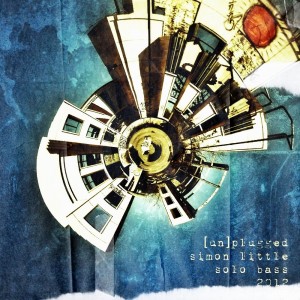#7 - See-I with Atomga and DJ Jahstone
19 July, Cervantes Other Side, Denver CO

DJ Jahstone set a good reggae ambiance with his sets, ranging from rock steady to deeper dub. You may notice that Denver band Atomga made my list twice. Months after they opened for Seun Kuti, they had lost their singer, but not their impeccable arrangements or bouncy punch. This set leaned more towards funk to match the headliners.
See-I is a reggae outgrowth of Thievery Corporation's extended musical family. Rootz and Zeebo Steele had a dynamic one-two hip hop vocal style. The Steele brothers were masters of crowd interaction, adept at building up a big presence or dropping down to make a casual connection. Their band was similarly versatile, nailing down a solid one-drop beat and then shifting to a looser funk groove on the next song. Above all, See-I's tightly choreographed song transitions rolled through relentlessly, leaving us happily drained in the early hours of the morning. (full concert review)
#6 - Portugal. The Man with the Lonely Forest and the Epilogues
2 May, Ogden Theatre, Denver CO

Denver band, the Epilogues had a strong, heavy grind and vocal tension, but their dynamic sense made them a good match to Portugal. The Man. The Lonely Forest doubled down on their studio sound with a more powerful rhythm section full of throbbing bass. Their indie rock tunes leaned towards the progressive side with shifts from dreamy to majestic.
Portugal. The Man always puts on a good show, full of wailing guitar and deep psychedelic currents. This year's sponsored tour included a larger stage set, packed with light globes, strobes and lasers. While most of the setlist came from In the Mountain, In the Cloud, the band pulled in some older tracks and surprises. The peak was the tribal beat of "The Devil", which mutated into a tripped out "Helter Skelter" cover. It was a fine evening of reverberation and acid-soaked abandon. (full concert review)
#5 - Los Lobos with Muskateer Gripweed
8 March, Aggie Theatre, Ft Collins CO

Regional favorites Muskateer Gripweed opened with a high energy set of soulful southern rock and bluesy jams. Although their stage presence was flashier than Los Lobos' laid back attitude, the polished arrangements and tight syncopation tied in well.
Los Lobos got back to their roots with an acoustic set featuring a host of specialized instruments and traditional folk sounds. The band unified a fairly diverse audience into a rollicking block party. Old and young, Anglo and Latino, we all shared in the funky, feel-good vibe. (full concert review)
#4 - Dengue Fever with Secret Chiefs 3 and Action Friend
24 January, Bluebird Theatre, Denver CO

I missed much of Action Friend's set while I was interviewing Senon Williams and Ethan Holtzman from Dengue Fever. I caught enough to appreciate their stage show, but that's about it. Their overdriven sound seemed like an odd match for Dengue Fever, though. Trey Spruance and Secret Chiefs 3 were also a wild card element in this line up, with music that ranged from metallic post-rock to dreamy ambient explorations. Their world music influences reflected Arabic scales instead of Cambodian, but that did lay a common ground with Dengue Fever.
I've loved Dengue Fever ever since I discovered their Khmer flavored surf rock. The sinuous melodic lines, the rich psychedelia, and Chhom Nimol's achingly beautiful voice create a rich melange of details to appreciate. Moving from sweet ingenue to pop goddess, Nimol's stage presence provided the centerpiece for the band. Even so, she and the rest of the band kept everything in service to the songs and keeping the groove. (full concert review)
#3 - El Ten Eleven with Races and Wire Faces
2 February, Hodi's Half Note, Ft. Collins CO

El Ten Eleven and Races were the main draws for this show, but local band Wire Faces offered a spirited opening set, packed with new wave energy. Races kept the evening rolling, but the sonic shift to dreamy pop and indie rock was a change of pace. Their softer moments may have positioned them as a palate cleanser for the headliner, but their deeper musical complexity demonstrated how they earned that spot.
In comparison to Races' stage full of musicians, El Ten Eleven's duo initially seemed stripped down. But Kristian Dunn quickly put that to rest with a larger than life stage persona and a full band sound. Watching the duo whipsaw from close-formation progressive jams to loose-rhythm open grooves was transcendent. Each amazing technical feat was overshadowed by its rich musical expression. (full concert review)
#2 - Easy Star All Stars with Passafire
13 September, Fox Theatre, Boulder CO

Passafire opened the show, favoring jam band eclecticism integrated with the expected reggae beats. Their tight set and strong rhythmic focus complemented the Easy Star All-Stars' reggae/dub sound. Passafire not only made the anticipation for Easy Star's set bearable, we were happy to wait while we enjoyed their wide range of material.
The Easy Star All-Stars were touring behind their recent release, Easy Star's Thrillah. We got to hear most of Thrillah's songs, as well as their perfect reggae-infused covers of the Beatles, Radiohead, and Pink Floyd. Every moment during the set was perfectly framed, but the band was so fluid that it all seemed effortless. Reggae is inherently uplifting, but the party vibe was inspiring. (full concert review)
#1 - Seun Kuti & Egypt 80 with Atomga
29 March, Boulder Theater, Boulder CO
 This was a show where all the stars aligned. The opening band, Atomga, offered a tight Afrobeat set with a solid horn section that got the crowd dancing and in the mood. Then Seun Kuti took the stage with his father's band, Egypt 80. Fela Kuti and Egypt 80 defined an era of Afrobeat jams. Seun Kuti gave us a taste of the band's peak, with a charismatic performance backed by tight arrangements and inspired solos. The rapport between the band and the audience reflected a perfect, ritualistic joy. (full concert review)
This was a show where all the stars aligned. The opening band, Atomga, offered a tight Afrobeat set with a solid horn section that got the crowd dancing and in the mood. Then Seun Kuti took the stage with his father's band, Egypt 80. Fela Kuti and Egypt 80 defined an era of Afrobeat jams. Seun Kuti gave us a taste of the band's peak, with a charismatic performance backed by tight arrangements and inspired solos. The rapport between the band and the audience reflected a perfect, ritualistic joy. (full concert review)Honorable mentions

 With this postcard from the Dirty South,
With this postcard from the Dirty South,  I'm sure there are countless local bands with the same dedication to relentless rhythms and catchy tunes, but the
I'm sure there are countless local bands with the same dedication to relentless rhythms and catchy tunes, but the 
 Producer
Producer  Bassist
Bassist 


 I toss Anywhere into my mix about once every month or so just to immerse myself into a hypnotic zone of trippiness.
I toss Anywhere into my mix about once every month or so just to immerse myself into a hypnotic zone of trippiness. 

 Matt Hill contributes bass and beats to progressive-psych band Expo ’70, but he has his own project on the side. As his alter ego,
Matt Hill contributes bass and beats to progressive-psych band Expo ’70, but he has his own project on the side. As his alter ego,  It's been
It's been 
 John Darnielle and
John Darnielle and  Last year, I
Last year, I 
 Imagine an alternate reality where Factory Records didn’t implode in 1992 but instead carried their trademark sound forward to the present day, a timeline where the darkwave sounds of Joy Division, New Order and Bauhaus matured and incorporated modern electronic music.
Imagine an alternate reality where Factory Records didn’t implode in 1992 but instead carried their trademark sound forward to the present day, a timeline where the darkwave sounds of Joy Division, New Order and Bauhaus matured and incorporated modern electronic music. 
 There are two sides to every story. That may have been
There are two sides to every story. That may have been 
